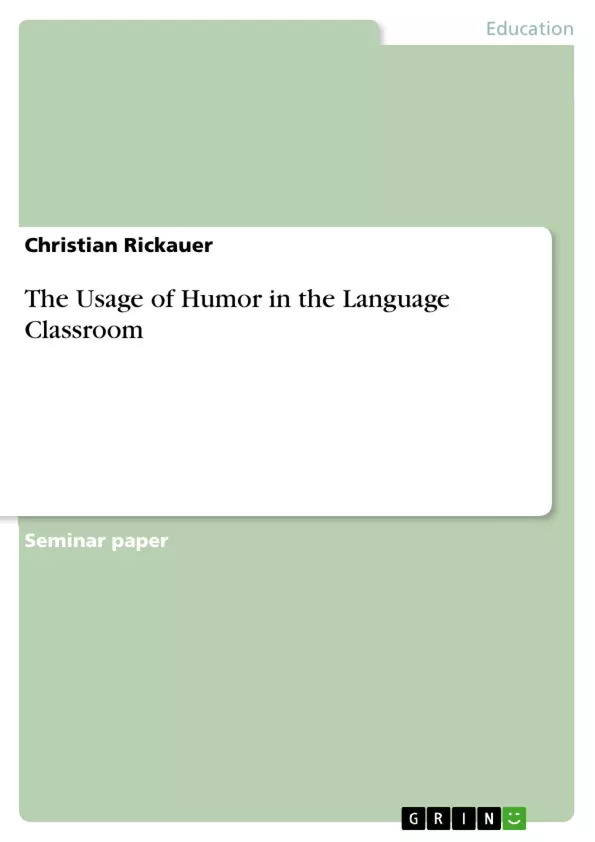I want to show in the following how the Communicative Language Teaching (CLT) approach is realized theoretically and practically in the environment of an EFL classroom; especially the factors of motivation and the use of humor are outstanding.
In consequence of the predominant language learning concept of CLT, the overarching goal of language teaching became communicative competence - "the ability of individuals to act in different situations linguistically appropriate". Suddenly though, communicative competence and meaning became the primary goals. For teachers, that fundamental communicative change in language learning meant that they could have helped leaners from then on in any way that motivates them to work with the language itself.
Moreover, the course of action of the teacher expanded enormously, while amongst students an extension of interaction and social forms took place. Instead of the rather conservative, grammar focussed approaches and direct teaching the methodology of "creative writings" - the use of authentic texts, creativity-based learning, problem-solving and student-activating activity based grammar work succeeded.
Accordingly, the enhancement of communication, pair and group activities in the classroom, the reduction of the teacher's guidance on favor of the students' activation are other crucial goals of the CLT. The overall approach allows the teacher to adjust more opportunities, values, contents, goals and procedures to the interest of his learners and to keep his methods of teaching open.
Inhaltsverzeichnis (Table of Contents)
- 1. Introduction.
- 2. Theory classroom interaction.....
- 2.1. Motivation
- 2.2. The discursive classroom..
- 2.3. Reducing TTT.
- 2.4. Increasing STT
- 2.5 Balanced teaching.
- 3. Practice - using humor in the classroom..
- 3.1. Humorous tasks/activities and its advantages
- 3.2. Dangers of using humor in the classroom
- 4. Conclusion.........
Zielsetzung und Themenschwerpunkte (Objectives and Key Themes)
This paper examines the theoretical and practical application of the Communicative Language Teaching (CLT) approach in an EFL classroom. The paper focuses on the importance of motivation and the use of humor in promoting interaction and reducing teacher talk time (TTT).
- The role of motivation in enhancing classroom interaction.
- The importance of creating a discursive classroom environment.
- Strategies for reducing teacher talk time and increasing student talk time (STT).
- The benefits and potential risks of using humor in the EFL classroom.
- The theoretical and practical implications of the CLT approach for EFL teaching.
Zusammenfassung der Kapitel (Chapter Summaries)
The introduction presents the overarching goal of language teaching as communicative competence and how this shift impacted the role of teachers and students. The chapter explores the transition from traditional grammar-focused approaches to more student-centered methods emphasizing communication, interaction, and creativity. The paper then focuses on the theoretical foundations of classroom interaction, highlighting the importance of motivation, the discursive classroom, and the reduction of TTT. It delves into different types of motivation, including integrative, instrumental, extrinsic, and intrinsic motivation, and their connection to student identities.
Schlüsselwörter (Keywords)
The main keywords and focus topics of the text include Communicative Language Teaching (CLT), classroom interaction, motivation, teacher talk time (TTT), student talk time (STT), discursive classroom, humor, EFL teaching, and student identities.
- Quote paper
- Christian Rickauer (Author), 2014, The Usage of Humor in the Language Classroom, Munich, GRIN Verlag, https://www.grin.com/document/496149



